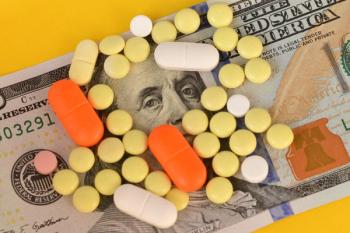
- Total Pharmacy® June 2023
- Volume 01
- Issue 03
Technology Tools Can Improve Customer Service
Customers expect high-quality customer service. Technology can help pharmacists meet those expectations.
Customer service has long been the heartbeat of a community pharmacy. Satisfied customers return to the same pharmacy again and again and recommend that pharmacy to others when they feel welcome and their needs are met.
Technology has helped pharmacists improve customer satisfaction. Some tools help pharmacists provide faster, more reliable service; others can make patients and customers feel even more appreciated.
In today’s tech-savvy pharmacies, pharmacists no longer need to manually create purchase orders and remember to transmit them daily. Most automate the ordering process as much as possible, including generating, transmitting, and receiving orders. This creates a smoother process and keeps inventory in stock for whatever a patient requires. Using automation at high-volume stores increases the pharmacy’s productivity and accuracy.
“The pharmacy system can be set to automate the generation, transmission, and receipt of purchase orders,” said Danny Dang, PharmD, owner and pharmacist at Esco Pharmacy in New York, New York. “When these tasks are manual, requiring user intervention, human forgetfulness can occur and orders are left in outstanding status. This can cause out-of-stocks, user frustration and stress, and, most importantly, customer dissatisfaction.”
Esco uses a patient engagement portal called PrescribeWellness to communicate with patients and providers. The technology has saved roughly $100,000 in labor otherwise spent manually calling patients. “It helps us with marketing [and] tracking patient vaccine records,” Dang said. “It also makes recommendations, creates patient medication reminders, and helps patients shop for Medicare Part D plans.”
Results of a recent survey of independent pharmacists by Prescryptive Health revealed that 40% of pharmacy decision makers admitted they don’t utilize technology to its fullest potential, even though it has been proven time and again that technology can be used in multiple ways to improve customer service. For example, technology can offer mobile solutions around patient engagement, simplifying tasks such as scheduling point-of-care tests, vaccinations, and screenings; inputting payment options; and receiving test results and reporting.
“With 85% of Americans owning a mobile phone, pharmacists should be offering easy-to-use mobile options,” said Paige Clark, RPh, vice president of pharmacy programs and policy at Prescryptive Health. “Additionally, drug costs are a large concern for patients, so offering mobile tools that allow patients to transparently view the price before they get to the pharmacy counter is valuable.”
Clark has seen numerous examples of the impact of mobile scheduling features on increasing appointment rates. She shared the story of a pharmacy in Washington that switched to a mobile solution to help schedule and collect payment. That pharmacy went from doing 10 to 20 COVID-19 tests each day to more than 100 tests in 3 hours.
“Now that we aren’t in the thick of the pandemic, pharmacies are continuing to use technology for scheduling but are also finding other ways to use technology—including pricing tools,” Clark said.
Another emerging opportunity for pharmacists is artificial intelligence (AI), which allows pharmacists to offer competitive prescription prices based on criteria such as location, geography, competitors, and drug brand so that patients get a fair price while the pharmacy stays competitive and profitable.
“In terms of AI-driven pricing, I’ve seen revenue increase by up to 16% in one week and up to 25% overall,” Clark said. “When pharmacies drive revenue, they’re able to stay open so they can continue providing value to patients.”
Delivering Superior Service
Julya Friedman, PharmD, president of GPS Pharmacy, a concierge pharmacy in Matthews, North Carolina, explained how her business uses technology to connect more closely with each patient by providing exceptional products and superior delivery of services.
“Our processing system allows for direct texting of the patient during the fill process for quick and efficient communication,” she said. “Our phone technology is used to offer 24-hour messaging and call transfer availability to reach a pharmacist, allowing our nurses to reach us even if it is 2 AM, and our delivery system is used to route drivers for efficient, same-day deliveries with real-time tracking and superior estimated delivery times.”
At GPS Pharmacy, workflow technologies not only have elevated operations by making the compounding process quicker—which decreases prices as compounders can produce more per hour—but also make the final prep exceptional in its accuracy, quality, and penetration abilities.
“With the use of electronic mortars and pestles, electronic mixers, and electronic mills, we can reduce particle sizes, therefore increasing absorption,” Friedman said. “The use of electronic scales for weighing and capturing the ingredients used also aids in safety and increases accuracy and an electronic check on weighing and dispensing.”
Even the pharmacy’s packaging relies on technology. Airless pump systems and dose clickers ensure ease of use as well as an accuracy that would not be possible—again, keeping customer satisfaction in mind.
“To run a successful pharmacy, you must rely on the most cutting-edge technologies to provide a service and a product that is exceptional,” Friedman said. “That is what a patient expects and deserves, and if you don’t provide that, then a newer and better pharmacy will.
Articles in this issue
over 2 years ago
DSCSA is Coming. Are you Ready?over 2 years ago
Creating and Leveraging Community Partnerships That Lastover 2 years ago
Pharmacists Find Marketing Success With Instagram, TikTokNewsletter
Pharmacy practice is always changing. Stay ahead of the curve with the Drug Topics newsletter and get the latest drug information, industry trends, and patient care tips.















































































































